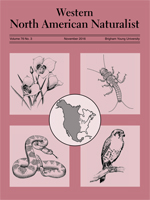Managing fire for the conservation of biodiversity is a widespread challenge. An important disturbance mechanism in big sagebrush (Artemisia tridentata) communities, fire has well-known effects on vegetation structure but poorly described consequences for sagebrush wildlife communities. We estimated the abundance of small mammals in relation to fire history in mountain big sagebrush (A. t. ssp. vaseyana) communities by way of a chronosequence approach that included 3 wildfires and adjacent unburned areas. We compared patterns of mammal community succession with expectations of the habitat accommodation model by associating responses of mammals to change over time in vegetation structure. Burned study sites were at various stages of vegetation succession from 7 to 19 years following fire. Shrub canopy cover ranged from 9% to 36% and was not fully recovered on the plots at 19 years after fire. Only Belding's ground squirrel (Urocitellus beldingi) demonstrated a measurable response to fire that was consistent across all 3 burned study areas. Its density was approximately 10 times greater in burned areas relative to adjacent unburned habitat irrespective of the number of years since a burn occurred. Deer mouse (Peromyscus maniculatus) was more abundant on sites more recently burned than at sites closer to full vegetation recovery. Overall, effects of fire on small mammal abundance in this landscape were relatively small, did not closely match the expectations of the habitat accommodation model, and suggest that conservation of small mammal communities in fire-affected sagebrush landscapes can be influenced by habitat management at large spatial scales.
How to translate text using browser tools
1 November 2016
Small Mammal Abundance in Mountain Big Sagebrush Communities after Fire and Vegetation Recovery
Aaron L. Holmes,
W. Douglas Robinson
ACCESS THE FULL ARTICLE





